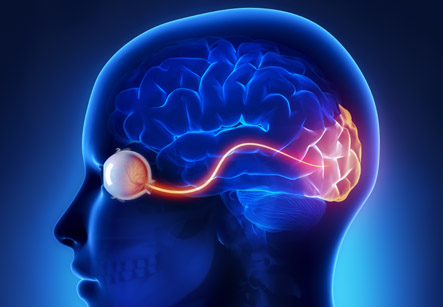Neuro Ophthalmology
Introduction
Neuro-ophthalmic disorders are tricky to diagnose because of the fact that the signs of these diseases are subtle. This is further complicated by incomplete assessment of patients during routine examinations and also the failure to correlate symptoms with signs. This results in missed neuro-ophthalmic diagnoses. For this reason, the eye examination needs to be more efficient in routine clinical practice.
The medical history and physical examination are crucial for this purpose. A patient complaining of bilateral, profound visual loss cannot dress neatly, unless groomed by a sighted caregiver. In patients with good binocular acuity complaining of constant binocular diplopia, examination usually shows a deviation on testing.
Reviewing the patient’s old photographs helps to determine the chronicity of many lid, pupil, and orbital problems. Value of such photo review should not be underestimated.
Iran is now ranking first both in the region and in the Middle East and the Iranian ophthalmology science is among the world top majors

Examination
A lot of information can be gathered if the physician escorts the patient to the examining room. The patient’s behavior in the waiting room, interaction with family or caregivers, and the patient’s gait and navigational sense can be ascertained. The way to examining room should be brightly illuminated to allow observation of the patient’s face and eyes. Anomalous head posture, such as head tilt can suggest contralateral palsy of cranial nerve IV. The patient’s dress and cleanliness often are determinants of visual function. While shaking hands with the patient, the patient’s fingers, skin, and grip can be evaluated. Mental status, speech, and affect can be assessed during history taking.
Some important diagnostic tools are described as follows:
Refraction:
The best possible refraction should be obtained. Measuring pinhole acuity is useful for this purpose. But it should be kept in mind that the pinhole corrects for only about 3 diopters (D) of refractive error. Patients with high refractive error, macular disease, or hand tremor may not improve their vision with the pinhole. Autorefractors are usually helpful.
Reviewing the patient’s old photographs helps to determine the chronicity of many lid, pupil, and orbital problems.
Some patients with poor mentation or poor head control cannot use the phoroptor (ie, a machine containing a rotating bank of lenses). In such patients, a trial frame can be used to perform refraction.
Patients with keratoconus (warped corneas) can present to the neuro-ophthalmologist with diplopia or blurred vision. A record of any scissoring of the retinoscopic reflex (an abnormal light reflex during objective refraction with a retinoscope) or irregular keratometry mires (a keratometer that measures corneal curvature) may be helpful in this case.
Cycloplegic refraction is a technique of performing refraction with cycloplegic drops instilled to relax the accommodation. This should be done in all children with abnormal vision examination and also in patients with unexplained headache, or unexplained visual complaints.
Sensory testing:
Stereovision testing and Worth 4-dot testing are not used routinely as a part of the neuro-ophthalmic examination, but they are useful in certain situations.
Sensory testing is best performed by occluding 1 eye. One of the efficient stereovision tests is the Titmus stereofly test. Stereovision testing is used commonly in pediatric eye examinations, and it is useful in patients with suspected functional visual loss. A normal result of stereovision testing suggests 20/20 acuity in both eyes.
Worth 4-dot testing is useful if patients have difficulty in expressing their diplopia. In patients with squint having good acuity in both eyes, central suppression suggests an element of amblyopia rather than an acquired motility deficit. The green filter should be placed before the better seeing one of the 2 eyes. Red-green glasses can also be used for duochrome tests in patients suspected of malingering. The duochrome test should be checked by the physician prior to the patient being brought to the examination room in order to ensure that the colored filters are properly matched.
Color-vision testing:
Ishihara color plates are commonly used. These are effective means of screening the patient’s color vision. Patients with poor vision still may be able to see the control plate of the Ishihara.
In patients who have a congenital red-green defect, the Hardy-Rand-Rittler plates may be useful.
Visual acuity:
Patient’s best-corrected visual acuity is essential to determine. The patient should be carefully observed during acuity testing to ensure that the chart is being read from only one eye at a time. In children, the eye not being tested should be covered by a tape or blocker. Alternatively, the examiner asks the parent to occlude the child’s eye not being tested.
Patients with homonymous hemianopsia may ignore the relevant portions of the eye chart or color-vision chart, or they may turn their face to compensate for the field loss.